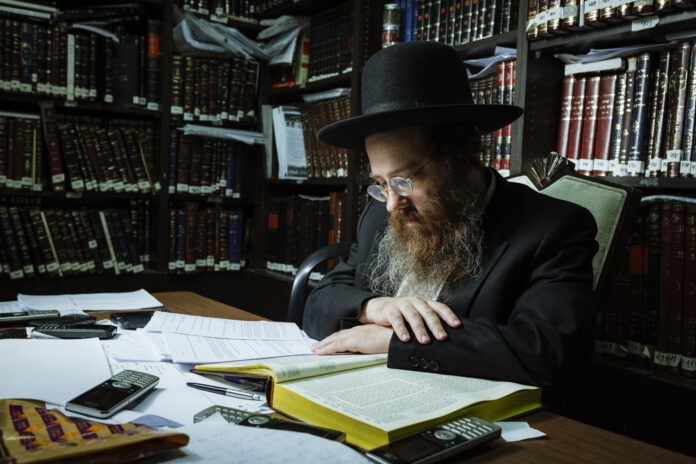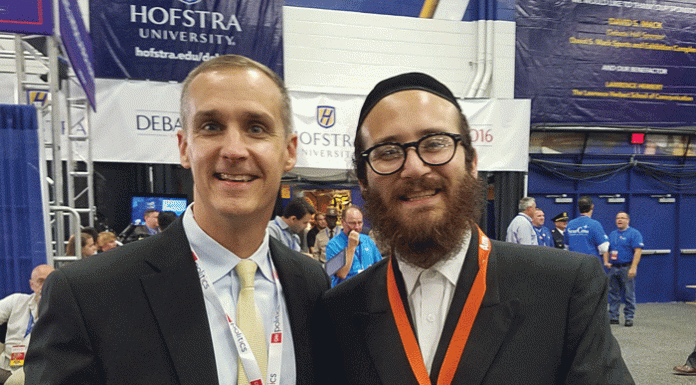Up until around five years ago, countless phones and paraphernalia would be scattered across the desk of Rav Amram Fried, one of the leading poskim of Bnei Brak. There would be five or six yungeleit sitting around him, answering the phones and listening to the various halachic queries that people posed to him nonstop. They would then repeat those shailos in condensed form to Rav Fried, who would then rule: “muttar,” “assur,” and so on and so forth.
Rav Fried eventually found it an immense challenge to be answering the halachic inquiries by himself. Because people could call him at virtually any hour of the day and get an immediate response, he was forced to bring in additional rabbanim and morei horaah to answer shailos. Today, there are dozens of members of his beis horaah, which is located on the floor right below his residence. All of them have been trained by Rav Fried and received shimush from him.
There are always at least two or three morei horaah present, paskening shailos on the halachah hotline. If the lines are all busy, callers are automatically transferred to one of 15 other rabbanim who answer the calls from their own homes. In all, some 60 morei horaah answer questions throughout the day, each one during his own time slot on a special phone. On average, the hotline fields around 1,800 calls a day, many of which are answered by Rav Fried himself. Last Erev Yom Kippur, there were 8,400 calls. It is believed that no other beis horaah in the world answers so many shailos.
There is also a very strong monitoring system in place. Almost all the shailos posed to them are ones they have answered in the past, so they know what Rav Fried’s psak is. Nonetheless, their teshuvos are recorded and other avreichim listen to each conversation. If they come across anything that doesn’t seem to conform to Rav Fried’s opinion they forward it to him, and if that is the case they get back to the person who posed the question within minutes to update him.
In addition to the hotline, a pamphlet called Azamra Leshimcha containing the rulings of Rav Fried is printed every week. Thousands of copies are distributed, and it also goes out by email to thousands of subscribers. Before the Yomim Tovim, the booklet deals with halachos relating to the upcoming Yom Tov; otherwise, it focuses on various issues dealt with in the beis horaah. In recent weeks, the publication has explored the halachos of muktzah, including rulings related to a contact lens that falls on the floor, a broom whose handle has come off, a buckle that falls off a belt and a watch that has come off the watchband.
A talmid of Ponovezh, Rav Fried follows the rulings and stringencies of the Chazon Ish to the letter. He is also the rav of a number of communities of avreichim in Bnei Brak and several more in Petach Tikvah. He even has a kehillah in Argentina whose members have accepted upon themselves to conduct themselves according to his rulings.
When I visited Rav Fried in his home in Bnei Brak a few weeks ago, there were “only” five phones on his desk. This meant that our discussion was “only” interrupted every three or four minutes. Each phone has a different ringtone and signifies whether it’s a question that can wait a few minutes or an urgent matter that needs an immediate response. In such cases, he answers right away, momentarily interrupting our conversation. The amazing thing is that as soon as he hangs up, he goes right back to what we were talking about, even if he stopped in midsentence.
The walls of his home remind me of those of Rav Chaim Kanievsky, zt”l, and Rav Ovadia Yosef, zt”l, both of whom I merited to visit. Every available space has bookshelves from floor to ceiling, including the relatively large dining room (Rav Fried has 12 children, ka”h). The dining room table is also piled high with new sefarim that have been sent to Rav Fried for his perusal. The rav, however, prefers to sit and learn and answer shailos throughout the day in a much smaller room elsewhere in the house. In that room, which is also crammed with sefarim, I’m surprised to see a screen positioned on the wall near the ceiling that updates the pertinent information about the questions coming in and being answered, as well as other technical aspects of the phone line.
Time is a very treasured commodity to Rav Fried, and he utilizes every moment to the fullest. For two hours every evening he receives people seeking his advice or a brachah with regard to shalom bayis, chinuch, business matters and even surgery. He pays attention to every single one. Many issues are of particular importance to him, including struggling youth and kiruv rechokim.
What I haven’t mentioned yet is that Rav Fried is only 42 years old, and that some of those who come to see him are much older than he is. Nevertheless, many gedolim accord him respect and numerous people twice his age seek his counsel. Rav Fried has a close kesher with the Litvishe gedolim as well as chasidishe rebbes, such as the Belzer and Gerrer Rebbes, the latter of whom sends avreichim and bachurim to him to be tested on their knowledge. When Rav Fried’s son was engaged, he went to the Gerrer Rebbe to make a lechaim.
To read more, subscribe to Ami





















